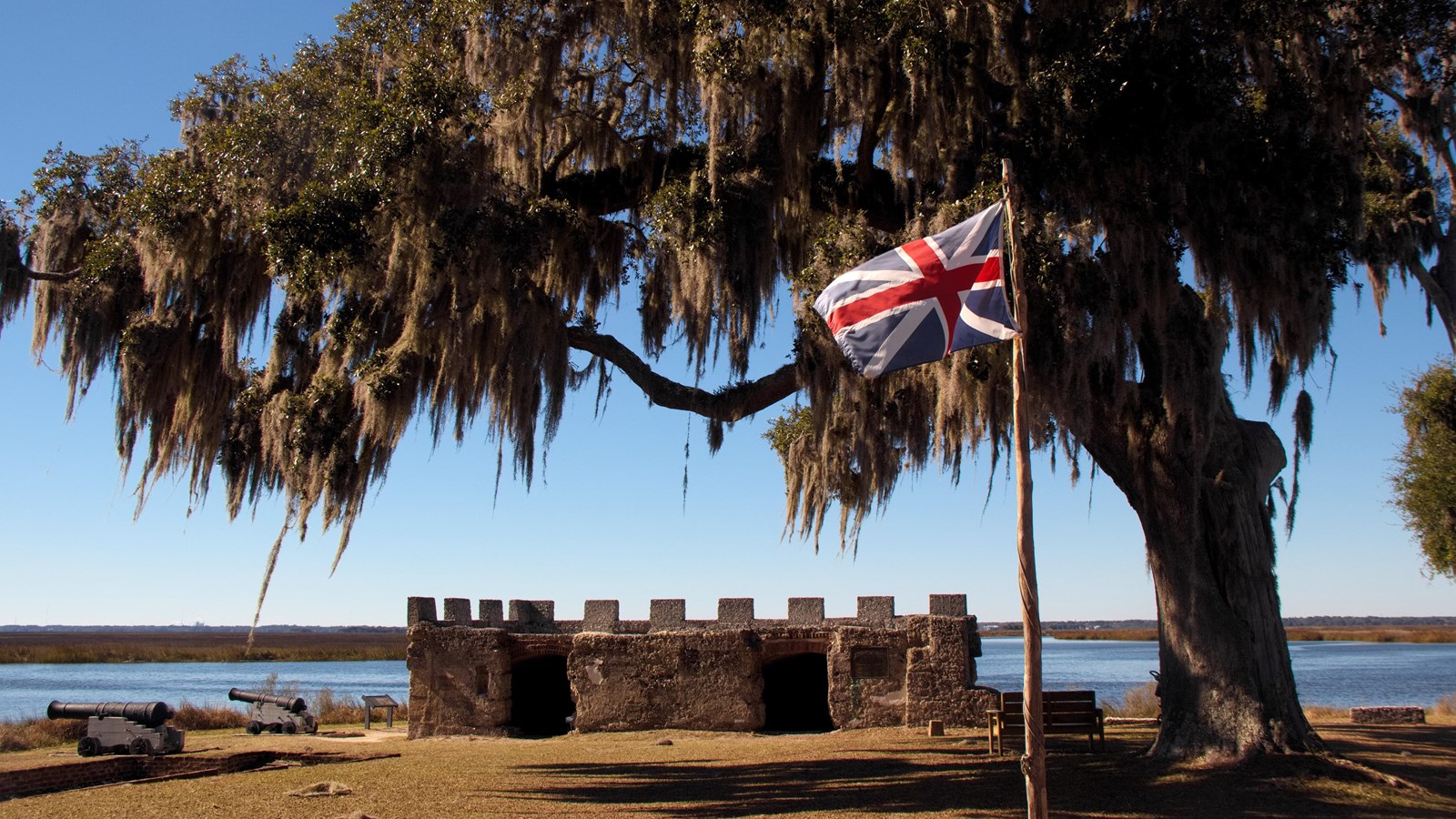Last updated: April 21, 2023
Place
Georgia: Frederica (Fort Frederica National Monument)

Fort Frederica National Monument
Quick Facts
Location:
St Simons Island, Georgia
Significance:
18th and 19th century setting where enslaved people made several escapes to freedom
Designation:
Network to Freedom Member (2023)
Located on St. Simons Island, Georgia, Frederica (Fort Frederica National Monument) is a unit of the National Park Service. It was the setting for a number of escapes by enslaved individuals, as well as a defensive outpost for a contraband colony. In 1751, Johann Martin Bolzius wrote that enslaved people often pass Frederica on their route to freedom in Spanish-held Florida. An enslaved girl named Maria escaped from Frederica in 1766 and successfully evaded capture for at least eight months. During the Civil War, Fort Frederica functioned as a defensive outpost for a freed community at the southern portion of St. Simons Island. Freed men occupied this outpost to observe the back channels of St. Simons Island and to deter any attack by Confederate forces on their community. These three stories span multiple generations and show how Fort Frederica was utilized in different ways by and presented different opportunities to enslaved or recently freed people to gain and maintain their freedom.
Frederica was not only used as a means of escape away from slavery. During the Civil War, Frederica was used as an outpost to guard against potential threats to the freedom of recently freed men, women, and children. Frederica was one of the first lines of defense for those hoping to make their freedom permanent during the midst of war. In the spring of 1862, a contraband colony of runaway slaves developed on St. Simons Island. On April 6th, Flag Officer S.F. Du Pont forwarded the report of Commander S.W. Godon, made on March 30th, to Gideon Welles, the Secretary of the Navy, about the “establishment of a colony of contrabands on St. Simon’s Island.” Godon noted that “Contrabands continue to come to us.” On March 26th, while traveling to Brunswick, “on my way up the river twenty seven more contrabands came to me.” This is a significant number and suggests that the creation of the colony is a direct result of the actions of formerly enslaved people to gain their freedom. Godon noted that the forty people now in the colony “live on T. Butler King’s place,” which was located at the southern end of the island.
The National Underground Railroad Network to Freedom serves to honor, preserve, and promote the history of resistance to enslavement through escape and flight, which continues to inspire people worldwide. The Network currently represents over 700 locations in 39 states, plus Washington D.C. and the U.S. Virgin Islands. Through its mission, the Network to Freedom helps to advance the idea that all human beings embrace the right to self-determination and freedom from oppression.
Frederica was not only used as a means of escape away from slavery. During the Civil War, Frederica was used as an outpost to guard against potential threats to the freedom of recently freed men, women, and children. Frederica was one of the first lines of defense for those hoping to make their freedom permanent during the midst of war. In the spring of 1862, a contraband colony of runaway slaves developed on St. Simons Island. On April 6th, Flag Officer S.F. Du Pont forwarded the report of Commander S.W. Godon, made on March 30th, to Gideon Welles, the Secretary of the Navy, about the “establishment of a colony of contrabands on St. Simon’s Island.” Godon noted that “Contrabands continue to come to us.” On March 26th, while traveling to Brunswick, “on my way up the river twenty seven more contrabands came to me.” This is a significant number and suggests that the creation of the colony is a direct result of the actions of formerly enslaved people to gain their freedom. Godon noted that the forty people now in the colony “live on T. Butler King’s place,” which was located at the southern end of the island.
The National Underground Railroad Network to Freedom serves to honor, preserve, and promote the history of resistance to enslavement through escape and flight, which continues to inspire people worldwide. The Network currently represents over 700 locations in 39 states, plus Washington D.C. and the U.S. Virgin Islands. Through its mission, the Network to Freedom helps to advance the idea that all human beings embrace the right to self-determination and freedom from oppression.
